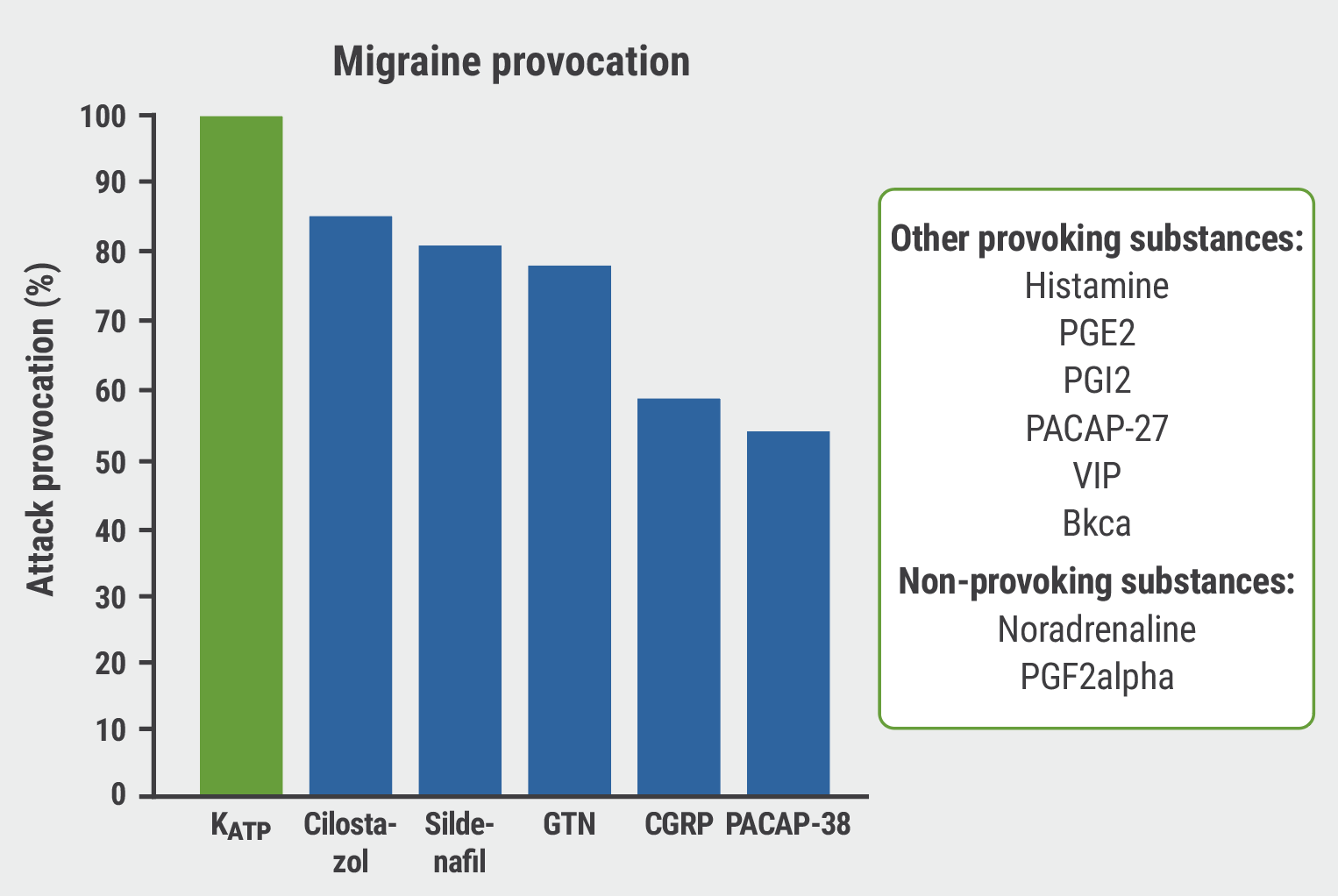The Brain Prize, awarded by the Lundbeck Foundation, rewards one or more neuroscientists each year who have made a ground-breaking impact on brain research with 10 million DKK (approx. 1.3 million EUR). Along with 3 others, Prof. Olesen was awarded the prize for discovering a biological mechanism 40 years ago that triggers a migraine attack, which has ultimately resulted in powerful new treatments, such as calcitonin gene-related peptide (CGRP) inhibitors.
Prof. Olesen remarked that, in many respects, migraine resembles a psychiatric disease, with patients having normal physical and neurological examination results, absence of biomarkers in the blood, and normal neuroimaging except for advanced methodologies. Migraine's classification and diagnostic criteria use the methodology of the DSM. Migraine is clinically precisely defined and has a huge socio-economic impact. It affects 16% of the population, is the second-highest cause of disability globally, and the highest among women. Prof. Olesen pointed out that migraine is difficult to study: it occurs unpredictably and with a gradual onset, and few volunteers will actually show up.
The familial relative risk of migraine with aura is 4, and of migraine without aura 2. In twins, concordance rates are higher in monozygotic than in dizygotic twins. Heritability is around 50%. Genome-wide association study (GWAS) has identified 123 genetic variants that are significantly associated with migraine, but the relative risk of each one separately is small. The rare sub-form familial hemiplegic migraine is dominantly inherited; 3 genes have been identified with causative mutations.
Like psychiatric disorders, migraine is probably a disturbance of signalling mechanisms. A human provocation model is valid for migraine without aura. Nitric oxide (NO), CGRP, pituitary adenylate cyclase-activating peptide (PACAP), prostanoids, and potassium channel (K-channel) openers can induce migraine attacks. Prof. Olesen pointed out there are several new drug targets in the nitric oxide pathway: selective inhibitors of endothelial nitric oxide synthase or neuronal NIOS (nNOS), guanylate cyclase inhibitors, PDE 5 activators, protein-kinase inhibitors, and ion channel antagonists. CGRP antagonism is of proven value and has led to the marketing of monoclonal human antibodies against CGRP or its receptor in the past few years. They revolutionise the prophylactic treatment of migraine. A mouse model has shown no additive effect of sumatriptan and olgacepant in combination with CGRP antibodies.
Many other signalling mechanisms have not yet been explored by the pharmaceutical industry but offer “a whole catalogue of opportunities” for novel drug development, Prof. Olesen stressed. Substances that are known for their ability to provoke migraine are all vasodilators. “No substance that is not a vasodilator has ever caused a migraine attack.” He specifically mentioned ATP-sensitive potassium channel (KATP) inhibitors, cilostazol, sildenafil, GTN, CGRP, PACAP-38 (see also Figure). “KATP causes migraine in 100 percent of cases, which is very exciting.” He added: “In an as yet unpublished study, we show that knocking out in mice a particular isoform of the channel Kir6.1/SUR2B, located in vascular smooth muscle cells, makes sensitisation to migraine impossible. This may be a very important and interesting finding.”
Figure: Migraine-inducing substances [1]

PACAP-38, Prof Olesen explained, is a peptide signaling molecule and family of CGRP. PACAP-38 is working on a membrane receptor that causes an increase in cyclic EMP, just like CGRP. “In a mouse model we have shown that we can induce a hyposensitivity response to migraine treatment in knock-out mice that lack the CGRP receptor. They can still be sensitised by PACAP. We have high hopes for PACAP antibodies, under development by 2 companies. Maybe they work precisely in those patients who do not respond to CGRP.”
- Olesen J. Genetics and signaling mechanisms of migraine. PL.06.01, ECNP 2021 Congress, 2–5 October.
Copyright ©2021 Medicom Medical Publishers
Posted on
Previous Article
« Somatic comorbidities of ADHD: epidemiological and genetic data Next Article
Cannabidiol for cannabis cessation shows positive results »
« Somatic comorbidities of ADHD: epidemiological and genetic data Next Article
Cannabidiol for cannabis cessation shows positive results »
Table of Contents: ECNP 2021
Featured articles
Anxiety and Stress
Anxiolytic activity of a novel orexin-1 receptor antagonist
Autism
Finding biomarkers for improved patient stratification
Behavioural Disorders
Sex similarities and differences in the neurobiology of aggression
Risky driving and lifestyle may have a common psychobiological basis
Cannabidiol for cannabis cessation shows positive results
Somatic comorbidities of ADHD: epidemiological and genetic data
Novel approaches to understanding the social brain
COVID-19
Alcohol consumption during lockdown
Post-COVID-19 depression responds well to SSRIs
Impact of COVID-19 on patients with psychotic disorders
Mood Disorders
Depression and brain structures associations across a lifespan
BDNF/TrkB pathway promising alternative for new antidepressants
Zuranolone reduces symptoms of major depression
Vortioxetine effectively reduces symptoms of depression and anxiety
Esketamine outperforms real-world management for treatment-resistant depression: preliminary results
Smartphone interventions in bipolar disorder: a position paper
Connecting, challenging, and empowering youth through their smartphone
Personality Disorders
Evaluating vafidemstat for the treatment of borderline personality disorder
Deep brain stimulation effective in the treatment of refractory OCD
Psychotic Disorders
Why antipsychotics cause weight gain
Roluperidone improves negative symptoms in schizophrenia
Other
Brain Prize Lecture: Prof. Jes Olesen on migraine
Laxative may improve cognitive performance
Related Articles

November 26, 2021
Brain Prize Lecture: Prof. Jes Olesen on migraine
© 2024 Medicom Medical Publishers. All rights reserved. Terms and Conditions | Privacy Policy

